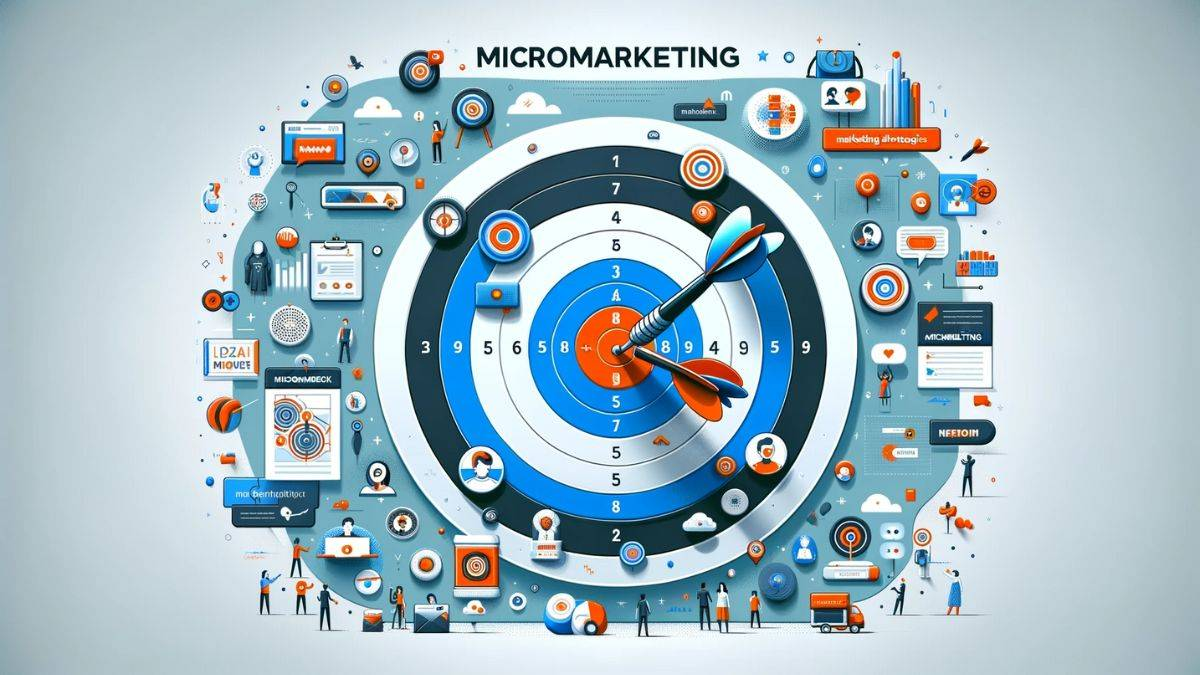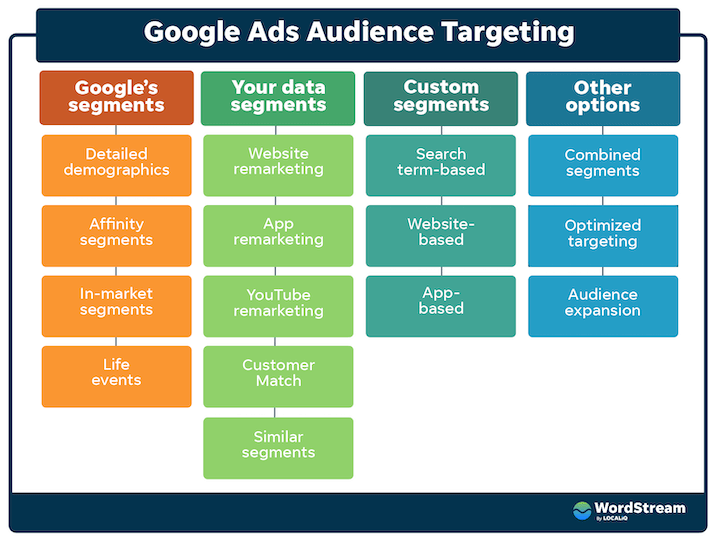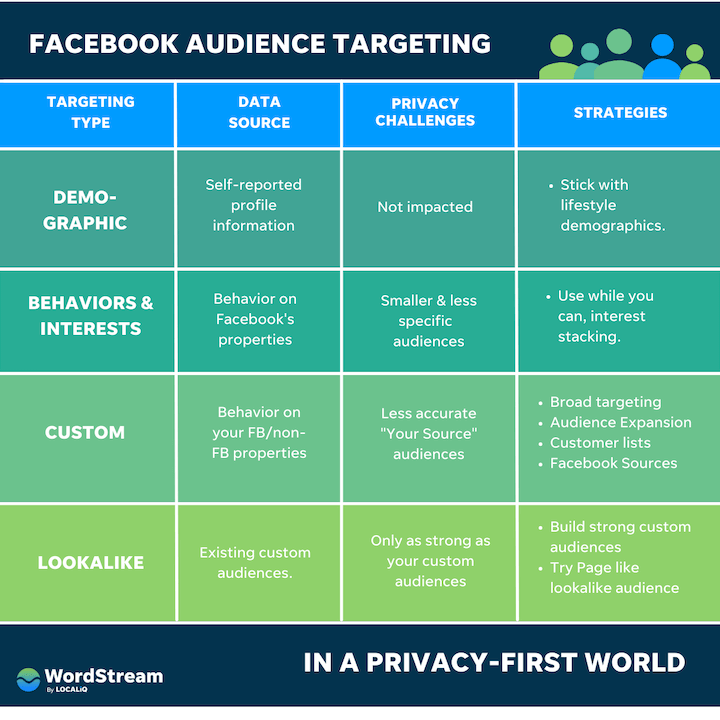19 min to read
If you follow our blog, you know that sometimes we like to challenge new concepts. Today we are bringing Micromarketing.
Micromarketing plays a crucial role in the digital strategy landscape of Codedesign, a leading digital marketing agency. By leveraging micromarketing techniques, Codedesign can deliver highly targeted and relevant advertisements to specific customer segments, enhancing both engagement and conversion rates.
So, what is Micromarketing?
Is a marketing strategy that focuses on targeting very specific segments of consumers rather than a mass market. It involves tailoring marketing efforts to meet the needs and preferences of these smaller, niche groups. In this guide, we will demystify the basics of micromarketing and explore its benefits, strategies, and common misconceptions. Whether you are a small business owner or a marketing professional, this guide will provide you with valuable insights on how to implement micromarketing in your marketing strategy effectively.
What is Micromarketing and Why is it Important?
Micromarketing is an essential part of modern marketing as it allows businesses to target specific segments of consumers with precision and efficiency. By engaging in micromarketing, businesses can tailor their messaging, products, and services to the unique needs and preferences of these niche groups. This personalized approach helps build stronger connections with customers, leading to increased loyalty and higher conversion rates. In today's highly competitive market, where customers have diverse needs and preferences, understanding micromarketing is important for businesses to stand out and succeed.
Micromarketing plays a crucial role in the digital strategy landscape of Codedesign, a leading digital marketing agency renowned for its precision and effectiveness in crafting personalized marketing campaigns. By leveraging micromarketing techniques, Codedesign can deliver highly targeted and relevant advertisements to specific customer segments, enhancing both engagement and conversion rates.
Enhanced Personalization and Customer Engagement
At Codedesign, micromarketing is pivotal for achieving an unprecedented level of personalization. This approach allows for the crafting of messages that resonate deeply with a finely segmented audience. For instance, by using data gathered through advanced analytics, Codedesign can tailor Google Ads campaigns that speak directly to the interests and needs of individual users, based on their previous online behavior or demographic details.
Increased Return on Investment (ROI)
Implementing micromarketing strategies significantly boosts ROI for Codedesign's clients. For example, in a recent campaign utilizing Meta Ads, Codedesign targeted a small group of high-intent users with customized ads. This strategy resulted in a 50% higher click-through rate compared to broader marketing tactics. By concentrating resources on audiences who are more likely to convert, Codedesign efficiently uses advertising budgets, ensuring that every dollar spent is optimized for maximum impact.
Superior Market Insights
Through micromarketing, Codedesign gains superior insights into customer preferences and behavior patterns. Utilizing data management platforms (DMPs), the agency analyzes vast amounts of data to identify niche market trends and opportunities. These insights are crucial for adjusting strategies in real-time and foreseeing market shifts, thus maintaining a competitive edge for their clients.
Better Customer Retention
Codedesign’s focus on micromarketing also enhances customer retention. By delivering highly relevant content and offers to specific segments, customers feel more valued and understood, fostering a stronger connection with the brand. For instance, by employing programmatic media to display personalized ads at the optimal moment in the customer journey, Codedesign has helped clients achieve up to a 30% improvement in customer loyalty.
Efficient Use of Marketing Resources
Micromarketing allows Codedesign to use marketing resources more efficiently. By targeting smaller, more defined groups, the agency avoids the scattergun approach typical of traditional marketing. This precision not only reduces waste but also increases the effectiveness of campaigns, as each ad is designed to meet the specific needs and preferences of its target audience.

Identifying Your Target Audience for Effective Micromarketing
Identifying your target audience involves understanding their demographics, behaviors, interests, and pain points. Looking at our partners Hubspot, thorough market research and analyzing customer data, businesses can gain valuable insights into their target audience. This information can then be used to create highly targeted marketing campaigns that resonate with these specific groups of consumers. For example, a business targeting health-conscious individuals may focus on promoting the health benefits of their products and services to this specific audience. By identifying and understanding your target audience, you can effectively implement micromarketing strategies that will drive better results for your business. This helps businesses save time and resources by reaching out to the most receptive audience and increases the chances of converting potential customers into loyal ones.
Step-by-Step Guide to Identifying a Target Audience for Micromarketing
Step 1: Define Your Objectives
Firstly, clarify what you want to achieve with your micromarketing campaign. Are you trying to increase sales of a particular product, improve customer loyalty, or break into a new market? Your objectives will guide the rest of your targeting process.
Step 2: Gather Existing Customer Data
Analyze your existing customer base to identify common characteristics and behaviors. Use data from:
- Sales records
- Social media analytics
- Customer surveys
- Website analytics
This data helps you understand who your customers are, what they like, and how they prefer to interact with your brand.
Step 3: Segment Your Audience
Divide your audience into smaller segments based on shared characteristics. Common segmentation criteria include:
- Demographics (age, gender, education level)
- Geographics (specific locations or regions)
- Psychographics (interests, values, lifestyles)
- Behavioral data (purchase history, brand loyalty)
Step 4: Conduct Market Research
Conduct additional research to fill in any gaps in your customer data and to understand the broader market environment. This might involve:
- Focus groups
- Online surveys
- Interviews
- Competitor analysis
Step 5: Select Your Target Segment
Choose the segment that best aligns with your objectives. Consider factors like the size of the segment, its purchasing power, and how well it matches with your brand’s offerings.
Step 6: Create Personas
Develop detailed personas for your selected segment. A persona should include not just demographic details, but also insights into their motivations, challenges, and decision-making processes.
Step 7: Test and Refine
Before fully launching your campaign, conduct small-scale tests to gauge the effectiveness of your strategies on the chosen segment. Based on the results, refine your approach as necessary.
Step 8: Launch Your Campaign
Implement your micromarketing campaign based on the insights gathered and refined through testing. Tailor your messaging and marketing channels specifically to the target segment.
Example from Codedesign’s Experience
In one of our projects at Codedesign, we worked with a boutique clothing retailer (case study) who wanted to increase foot traffic to their store. After segmenting their market based on demographics and psychographics, we identified a target audience of professional women aged 25-40 who valued unique fashion pieces and supported local businesses.
We created a micromarketing campaign that included personalized email newsletters featuring items we knew were popular within this segment, and geo-targeted social media ads highlighting time-limited offers available at the nearby store. The campaign resulted in a 25% increase in foot traffic and a significant uplift in sales.
Pros and Cons of Target Audience Identification for Micromarketing
Pros:
- Increased Relevance: Tailoring your message to a specific group increases the relevance of your marketing efforts.
- Higher Conversion Rates: More relevant marketing typically leads to higher engagement and conversion rates.
- Efficient Use of Resources: Focusing on a specific segment helps in allocating your marketing resources more efficiently.
Cons:
- Resource Intensive: Gathering detailed data and segmenting the audience can be time-consuming and costly.
- Risk of Exclusion: By focusing on a particular segment, there's a risk of overlooking potential customers outside this group.
- Rapid Changes: Target segments can evolve quickly, necessitating regular reviews and adjustments to your strategy.
This structured approach helps ensure that your micromarketing efforts are directed effectively, maximizing impact while optimizing resource allocation.
Tailoring Your Marketing Efforts
Tailoring your marketing efforts is the key to success in micromarketing. One strategy for achieving this is by creating personalized marketing messages that speak directly to the needs and interests of your target audience. This can include using data-driven insights to craft customized content or utilizing targeted advertising on platforms such as social media. Another strategy is to focus on specific geographic locations where your target audience is more likely to be located. For instance, a company specializing in winter sports equipment would be wise to tailor its marketing strategies towards regions experiencing colder weather, instead of casting a wide net over a nationwide audience.
The Benefits of Micromarketing
By meticulously targeting specific segments of consumers, businesses can delve deeper into understanding their unique needs and preferences. This strategic approach allows for the creation of highly tailored solutions that precisely meet those specific needs. The outcome of this targeted strategy is significantly higher customer satisfaction and retention rates, which are key drivers for increasing sales and enhancing the return on investment (ROI). Moreover, by focusing efforts on catering to a niche market, businesses can carve out a distinctive presence and establish themselves as undisputed experts in a particular domain.
When customers perceive that a company not only understands but also specifically caters to their individual needs and desires, they develop a deeper emotional connection to the brand. This sense of being valued and understood encourages robust loyalty, making them more inclined to consistently choose the brand over competitors, even in a crowded market. Satisfied customers often become vocal advocates for the brand, sharing their positive experiences and recommending the company to others. This word-of-mouth marketing is invaluable, as it amplifies the brand's reach and can attract new customers who trust the recommendations of their peers.
Micromarketing offers numerous benefits that can be particularly transformative for businesses aiming to enhance customer engagement and optimize their marketing spend. By focusing on highly targeted segments of the market, companies can achieve more personalized communication and better alignment with their audience's specific needs and interests. Let's explore these benefits through completely different examples from Codedesign's work with clients such as Chicco Portugal (Chicco.pt) and Savvy Navvy.
Increased Conversion Rates
Chicco.pt: Utilizing micromarketing, Codedesign developed tailored campaigns targeting expectant parents and new families in Portugal. By employing advanced analytics to segment users based on their browsing behavior on prenatal and baby care products, Codedesign crafted personalized email campaigns and Google Ads focused on those segments. This approach led to a remarkable 65% increase in conversion rates for Chicco.pt, as the messages resonated more effectively with the audience's current life stage and needs.
Higher Engagement Rates
Savvy Navvy, a maritime navigation app, leveraged micromarketing to engage boat owners and sailing enthusiasts. Codedesign utilized Facebook’s detailed targeting options to reach users interested in sailing magazines, maritime sports, and related activities. By creating customized content that included user testimonials and real-time navigation scenarios, the campaigns achieved a 40% higher engagement rate. This strategy not only attracted more users but also significantly increased app downloads.
Improved Customer Retention
Chicco.pt: For Chicco, maintaining long-term customer relationships is vital. Micromarketing helped in identifying specific customer groups that could benefit from returning to the brand as their children grew. By deploying targeted offers and product recommendations that aligned with developmental stages, Chicco.pt saw improved retention rates. Parents receiving these personalized communications felt a stronger connection to the brand, evidenced by a 30% increase in repeat purchases.
Efficient Budget Allocation
Savvy Navvy used micromarketing to allocate its marketing budgets more efficiently. By focusing on high-intent users, such as active members of sailing clubs and subscribers to nautical publications, Codedesign helped optimize ad spend. This targeted approach reduced overall campaign costs by 25% while maintaining lead quality, demonstrating that a focused strategy can lead to savings and more efficient resource use.
Gaining Competitive Advantage
Chicco.pt and Savvy Navvy: Both brands gained a competitive edge by understanding and acting on niche market trends. For Chicco, this meant anticipating the needs of parents at different stages, while for Savvy Navvy, it involved appealing to specific types of sailing enthusiasts. Codedesign’s use of DMPs to gather and analyze customer data enabled these brands to outmaneuver competitors who might still be using broader, less targeted marketing approaches.
Common Misconceptions about Micromarketing
A widespread misunderstanding about micromarketing is the belief that it benefits solely small businesses or specialized sectors. However, micromarketing can be applied to businesses of all sizes and in any industry. Another myth is that micromarketing is time-consuming and resource-intensive. While it does require careful planning and targeting, the benefits of increased ROI and brand loyalty make it a worthwhile investment. Some may think that micromarketing is too specific and limits the potential reach of a business. In reality, targeting specific segments of consumers can lead to more effective and efficient marketing efforts, as businesses are not wasting resources on reaching uninterested or irrelevant audiences.

Integration with Digital Marketing
The integration of micromarketing with digital marketing has opened up endless possibilities for businesses to effectively reach and engage their target audience. With the use of data analytics and technology, businesses can gather valuable insights into consumer behavior and preferences, allowing them to create highly targeted campaigns that resonate with their audience. Social media platforms also provide a powerful tool for micromarketing, as businesses can utilize targeted advertising and personalized messaging to reach their desired audience. The rise of e-commerce has made it easier for businesses to tailor their products and services to specific niches, further enhancing the effectiveness of micromarketing strategies.
Integration with advanced digital marketing techniques involves using sophisticated tools and strategies to deliver personalized, highly targeted advertising to specific audience segments. Codedesign, with its expertise in cutting-edge digital marketing solutions, leverages several advanced techniques such as Demand-Side Platforms (DSPs), geo-targeting, and specific functionalities within Google Ads and Meta Ads to execute highly effective microtargeting campaigns. Here’s how these tools and strategies are integrated:
Demand-Side Platforms (DSPs)
DSPs are crucial for automating the purchasing and optimization of digital advertising across multiple sources. Codedesign utilizes DSPs to manage high-volume ad placements, using real-time bidding to ensure the best ad prices. By integrating DSPs, Codedesign can efficiently target audiences across a wide range of media without manual intervention, leading to significant cost and time savings. For example, for an eCommerce client, Codedesign can use a DSP to automatically buy ad space on websites frequented by a target demographic identified through data analytics, such as middle-aged professionals interested in luxury goods.
Geo-Targeting
Geo-targeting allows for the delivery of content based on the geographic location of a user. This is incredibly useful for businesses that have a regional focus or multiple physical locations. Codedesign integrates geo-targeting within Google Ads and Meta Ads to localize marketing efforts. For instance, a restaurant chain can launch a campaign via Google Ads that targets users within a 10-mile radius of new locations with special opening promotions. Similarly, a real estate company could use Facebook ads to target potential buyers in specific high-value neighborhoods.

Google Ads for Microtargeting
Google Ads offers robust targeting options that include keywords, demographics, interests, and behaviors. Codedesign exploits these features for microtargeting specific user groups. For example, using Google Ads, Codedesign can set up a campaign for a tech gadget targeting users who have searched for similar products, visited tech review sites, or shown interest in technology news. Moreover, by integrating with Google Analytics, Codedesign can create remarketing lists to target ads at users who have visited specific pages but didn’t convert, enhancing the chances of returning and completing a purchase.
Google Ads is a powerful tool for microtargeting, offering a variety of sophisticated features that enable advertisers to reach specific user segments based on a myriad of criteria. Codedesign leverages these capabilities to enhance the precision and effectiveness of digital marketing campaigns for its clients. Here’s a deeper exploration into how Google Ads is utilized for microtargeting:
Keyword Targeting - Keyword targeting is foundational in Google Ads. It allows advertisers to display ads to users based on the specific terms they enter into Google's search engine. Codedesign strategically selects keywords based on extensive research into search trends, competitor analysis, and understanding of the client's target audience. For instance, for a client selling organic skincare products, keywords might include "organic face cream," "eco-friendly skincare," or "natural skincare products." These keywords are not only relevant but also targeted towards users with specific interests, increasing the likelihood of capturing attention from a niche audience.
Demographic and Interest Targeting - Google Ads offers demographic targeting which includes age, gender, geographic location, and even household income. This allows for the customization of campaigns that resonate more deeply with specific segments. For instance, a luxury car brand might target ads to users within the top 10% of household incomes and specific age groups likely to purchase luxury vehicles.
Interest targeting takes this a step further by allowing Codedesign to target users based on their interests, hobbies, and past online behaviors. This includes categories such as "Fitness and Wellness," "Consumer Technology," or "Fashion Enthusiasts." By aligning ad content with these interests, Codedesign enhances the relevance and appeal of the ads, thereby improving engagement rates.
Remarketing - Remarketing is another powerful feature of Google Ads used by Codedesign to target users who have previously interacted with a client's website or mobile app but did not convert. Remarketing ads remind these users of their initial interest, often offering them incentives like discounts or reminding them of an abandoned cart. This method effectively increases conversion rates by keeping the brand top of mind and encouraging return visits.
Customer Match - Customer Match allows Codedesign to use online and offline data to reach and re-engage with customers across Google's platforms. By uploading lists of contact information that customers have shared, Codedesign can serve targeted advertising specifically to those segments across Google Search, YouTube, and Gmail. This capability is particularly effective for personalized offers, product recommendations, and loyalty programs, ensuring that the most relevant message reaches those who are already familiar with the brand.
Location Targeting and Local Inventory Ads - Google Ads' location targeting enables Codedesign to display ads to users based on their physical location, down to the zip code level. This is crucial for businesses with physical stores or localized services. Furthermore, Local Inventory Ads can be utilized to show users specific products that are available in nearby stores, which is ideal for driving foot traffic and local sales.
Device Targeting - Codedesign can tailor Google Ads campaigns based on the user's device type, operating system, and even device model. This targeting is particularly useful in optimizing campaigns for mobile users, who may have different behavior patterns and preferences compared to desktop users. Mobile-optimized ads can feature click-to-call buttons, app download links, or directions to the nearest store, enhancing the user experience and conversion potential.

Meta Ads for Microtargeting
Meta Ads (formerly Facebook Ads) provide extensive targeting options based on user data collected by the Meta platforms, including Facebook and Instagram. This includes demographics, interests, behaviors, and more detailed connections. Codedesign uses these capabilities to create highly personalized ad campaigns. For instance, for a beauty brand, Codedesign might target ads to women aged 20-40 who are interested in beauty products and have interacted with similar content or competitors’ pages on Instagram. Additionally, lookalike audiences can be created to reach new users who share characteristics with existing customers, expanding the target base without losing focus.
Meta Ads, formerly known as Facebook Ads, offer a highly sophisticated platform for microtargeting due to its access to extensive user data collected through Facebook and Instagram. Codedesign utilizes Meta Ads to craft highly targeted advertising campaigns that are finely tuned to the behaviors, preferences, and demographics of specific audience segments. Here’s an expanded look at how Meta Ads are employed for microtargeting:
Detailed Demographic Targeting - Meta Ads excel in providing advertisers with incredibly detailed demographic targeting options. These include basic demographics such as age, gender, and location, but extend much further into areas like education, employment, life events, and relationship statuses. For instance, Codedesign might target individuals who are newly engaged with ads for wedding planning services or bridal wear. This level of granularity allows campaigns to be incredibly specific, enhancing the relevance of the ads to the targeted users.
Interest and Behavior Targeting - One of the standout features of Meta Ads is the ability to target users based on their interests and behaviors. These interests are gleaned from user activities across Meta platforms, including pages liked, content interacted with, and other linked activities. Codedesign leverages this data to target ads related to specific hobbies, brand preferences, and media consumption habits. For example, a fitness equipment retailer might target users who have shown interest in fitness pages, workout videos, or health and wellness blogs.
Connection-Based Targeting - Meta Ads allow advertisers to target users based on their connections to specific pages, events, or apps. Codedesign uses this feature to target friends of people who have already interacted with a brand’s page or who have attended a particular event. This strategy is based on the social proof principle, where people are more likely to trust and engage with a brand that their friends already like or interact with. This can significantly amplify the reach and impact of campaigns.
Custom Audiences - Custom Audiences are a powerful tool in the Meta Ads arsenal, enabling Codedesign to reach users who have previously interacted with a client’s content. This can include past customers, users who have visited a website, or even those who have engaged with a mobile app. By uploading customer data to Meta, Codedesign can retarget these audiences with tailored ads, increasing the likelihood of re-engagement and conversion. For example, a travel agency could target past customers with ads for special deals or new destinations based on their previous bookings.
Lookalike Audiences - Codedesign often uses Lookalike Audiences to extend the reach of successful campaigns. By identifying the common qualities of the best-performing customers (from a Custom Audience), Meta can find new users who share similar characteristics but who are not yet aware of the brand. This method effectively scales the reach of campaigns while maintaining a high level of targeting precision. For instance, if a luxury watch brand finds a high conversion rate among certain demographics, Lookalike Audiences can be used to target similar potential customers.
Geo-Location Targeting - Geo-targeting in Meta Ads is particularly effective for local businesses or events. Codedesign can target ads to users based in specific locations, down to the zip code. This targeting can be enhanced with location-specific creatives, offers, and calls to action, which increases the local relevance and effectiveness of the ads. A local restaurant, for instance, could target nearby users with dinner promotions or special event advertisements.
Platform-Specific Features - Finally, Codedesign takes advantage of platform-specific features in Meta Ads, such as Instagram Stories or Facebook Instant Experiences. These ad formats are designed to capture more engagement on their respective platforms. For example, a beauty brand might use Instagram Stories to showcase quick makeup tutorials targeting young, beauty-conscious individuals, leveraging the high engagement rates of video content on Instagram.

Apple Ads for Microtargeting
Apple Ads provide a unique opportunity to reach users within Apple's ecosystem. This platform is especially effective for app developers, publishers, and brands looking to engage with a high-value audience that uses iOS devices. Here’s how Apple Ads can be effectively used for microtargeting:
App Store Search Ads - Apple's App Store Search Ads allow developers to promote their apps at the top of relevant search results in the App Store. This is crucial for visibility in a crowded marketplace. By using keyword-specific targeting, brands can ensure that their apps are shown to users who are actively searching for related terms. For example, a meditation app developer might target keywords such as "relaxation," "meditation," and "stress relief" to attract users interested in wellness.
Creatives and Messaging - Apple Ads emphasizes the importance of relevant and engaging creatives that resonate with the target audience. Since the visual aspect of the ad is often the first point of interaction, it's essential to design high-quality, appealing images and videos that align with the brand's message. For instance, if a gaming app is targeting teenagers, the creatives should be vibrant, dynamic, and include elements that appeal to a younger demographic.
Demographic Targeting - While Apple provides less granular targeting options compared to Meta due to privacy considerations, demographic targeting is still possible to a certain extent. Advertisers can target based on general demographics such as age, gender, and country, allowing for the tailoring of campaigns to specific audience segments. For example, a luxury fashion app might focus its advertising efforts on older, affluent demographics in top-tier markets.
Customer Segments - Apple Ads allows advertisers to create custom segments based on users' previous interactions with ads or the advertiser’s app. This can be particularly effective for retargeting users who have engaged with the app but have not converted or for re-engaging past users with new features or offers. For instance, a travel app could target users who have previously searched for flights but did not make a booking.
Privacy-First Advertising - With Apple’s strong focus on user privacy, including the introduction of App Tracking Transparency, advertisers need to adapt their strategies to operate effectively within these constraints. This means focusing more on contextual advertising and less on behavior-based targeting. For example, advertising a recipe app within a cooking magazine on Apple News could be an effective strategy.
Combining Meta and Apple Ads for Comprehensive Coverage
Integrating Meta Ads with Apple Ads can provide comprehensive coverage across multiple platforms and devices, ensuring that campaigns reach users wherever they are most active. For instance, while Meta Ads could be used to target users based on detailed behavioral data within social platforms, Apple Ads could complement these efforts by capturing users within the iOS ecosystem, particularly when they are engaged in different contexts like searching in the App Store or reading on Apple News.
The strategic use of both advertising platforms allows Codedesign to leverage each platform's strengths, targeting users based on their interests and behaviors and their engagement within specific digital environments. This integrated approach maximizes reach and effectiveness, providing a robust framework for achieving marketing objectives across diverse user bases.
For more insights into optimizing digital advertising strategies using platforms like Apple Ads and Meta Ads, visit Codedesign.
Integration Across Channels
The key to successful advanced digital marketing is not just using these tools in isolation but integrating them to create a cohesive strategy. Codedesign ensures that data and insights gained from one platform inform strategies on others. For example, insights from a successful Meta Ads campaign could inform keyword and bidding strategies on Google Ads, while DSP-driven data helps refine geo-targeting parameters.
By leveraging these advanced digital marketing tools and integrating them into a unified strategy, Codedesign helps clients reach highly specific audiences with personalized messages, driving both engagement and conversions.
Real-Life Examples of Successful Micromarketing Campaigns
A real-life example of a successful micromarketing campaign is Coca-Cola's "Share a Coke" initiative. The company printed popular names on their bottles, targeting individuals who desired personalized products. The campaign was highly effective as it resonated with consumers' desire for individualized experiences and helped increase sales by 2%. Another example is Nike's "Find Your Greatness" campaign, which focuses on inspiring and empowering individuals to achieve their fitness goals. This campaign targeted specific demographics, such as women and young athletes, with personalized messaging that spoke directly to their aspirations and motivations. As a result, Nike saw an increase in sales and brand loyalty from these specific target audiences. These examples demonstrate the power of micromarketing in creating highly targeted campaigns that resonate with specific segments of consumers.
Understanding the basics of micromarketing is important for businesses to succeed in today's competitive market. By targeting specific consumer segments with tailored marketing efforts, businesses can build stronger connections with customers, increase brand loyalty, and drive higher conversion rates. With the integration of digital marketing and access to valuable consumer data, implementing effective micromarketing strategies has become more accessible and essential for businesses of all sizes and industries. By understanding the benefits and strategies of micromarketing, businesses can gain a competitive edge and stand out in their crowded market.
Frequently Asked questions about Micromarketing
What is micro-marketing and how does it differ from traditional marketing strategies?
Micro-marketing is a strategy that focuses on a small group of highly targeted consumers. It contrasts with traditional marketing strategies that often aim at a broader audience. The key distinction lies in the customization and specificity of the marketing message; micro-marketing tailors its approach to suit the precise preferences and needs of a niche segment, often using advanced data analytics to understand and predict consumer behavior more accurately.
Why is micro-marketing particularly effective for small businesses or niche markets?
Micro-marketing is particularly effective for small businesses or niche markets because it allows for a more efficient allocation of marketing resources by targeting those most likely to respond to specific messaging. This strategy not only reduces waste but also enhances customer engagement and loyalty through personalized communication. Small businesses, with their limited budgets, find this approach cost-effective as it maximizes the impact of their marketing spend.
Can you provide examples of successful micro-marketing campaigns?
One successful example of micro-marketing was by a Codedesign client in the organic skincare industry. They targeted young urban women interested in sustainable living. Through tailored Facebook ads and partnerships with eco-conscious influencers, they saw a 45% increase in engagement and a 30% uplift in sales within three months. Another instance involved a local bakery that used Instagram to target nearby customers with ads featuring daily specials, resulting in increased foot traffic and sales.
What are the key components of a micro-marketing strategy?
The key components of a micro-marketing strategy include detailed market research, segmentation, targeting, and personalized content creation. Effective micro-marketing relies heavily on understanding the consumer’s preferences at a granular level and developing tailored marketing messages that resonate deeply with the target segment. Additionally, consistent monitoring and adapting of strategies based on real-time data and feedback are crucial.
How do businesses identify the specific customer segments for a micro-marketing campaign?
Businesses can identify specific customer segments for a micro-marketing campaign through a combination of demographic, psychographic, and behavioral data analysis. Advanced data analytics tools play a vital role here, enabling companies to sift through large datasets to identify patterns and trends that pinpoint a specific audience. Surveys, focus groups, and customer feedback loops are also instrumental in gathering insights that define these segments.
What role does data play in micro-marketing?
Data is fundamental to micro-marketing as it informs every aspect of the campaign—from identifying the target audience and crafting personalized messages to optimizing delivery channels and measuring success. Utilizing both big data and small data, marketers can achieve a nuanced understanding of consumer behavior, preferences, and potential pain points, which helps in crafting highly relevant and engaging marketing strategies.
How do digital platforms facilitate micro-marketing efforts?
Digital platforms, such as social media, email, and programmatic advertising, facilitate micro-marketing efforts by providing tools that segment audiences, deliver personalized messages, and measure engagement effectively. These platforms offer advanced targeting options based on user behavior, interests, location, and more, enabling marketers to reach their niche audience with precision.
What are some common challenges businesses face when implementing micro-marketing strategies?
Common challenges include complexities in data collection and analysis, ensuring privacy compliance, creating genuinely personalized content, and managing the higher costs associated with targeted campaigns. Additionally, measuring the direct impact of micro-marketing efforts can be intricate due to the specific and sometimes small scale of the target segments.
How can businesses measure the success of their micro-marketing campaigns?
Success in micro-marketing campaigns can be measured through metrics such as conversion rates, engagement rates, customer acquisition costs, and ROI. Additionally, qualitative measures like customer satisfaction and brand loyalty are also critical indicators of the effectiveness of a micro-marketing strategy. Advanced analytics tools can help track these metrics in real-time, allowing businesses to adjust their strategies as needed.
What are the future trends in micro-marketing? How is it evolving with advancements in technology?
The future of micro-marketing lies in increasingly sophisticated data analytics and AI technologies that can predict consumer behavior with greater accuracy. We're likely to see more integration of AI-driven insights into micro-marketing campaigns, enhancing personalization and targeting precision. Furthermore, the use of augmented reality (AR) and virtual reality (VR) to create immersive marketing experiences tailored to individual preferences could redefine engagement in niche markets.

About CodedesignCodedesign is a digital marketing agency with a strong multicultural and international presence, offering expert services in digital marketing. Our digital agency in Lisbon, Boston, and Manchester enables us to provide market-ready strategies that suit a wide range of clients across the globe (both B2B and B2C). We specialize in creating impactful online experiences, focusing on making your digital presence strong and efficient. Our approach is straightforward and effective, ensuring that every client receives a personalized service that truly meets their needs. Our digital agency is committed to using the latest data and technology to help your business stand out. Whether you're looking to increase your online visibility, connect better with your audience, get more leads, or grow your online sales. For more information, read our Digital Strategy Blog or to start your journey with us, please feel free to contact us. |
CodeDesign is leading:
- Digital Agency
- Digital Marketing Agency
- Digital AI Agency
- Digital Ecommerce Agency





Add comment ×